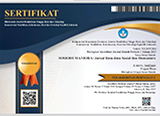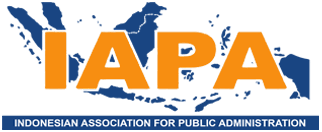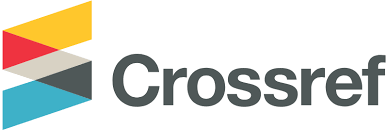DETERMINANTS OF EMPLOYEE RETENTION MILLENNIALS WORKFORCE AT PT ASURANSI JASARAHARJA PUTERA
Abstract
The abundance of knowledge possessed by the company can be utilized optimally to improve company performance to create the best products, services, business processes, and customer services. Less than optimal utilization of knowledge can hamper the company’s performance and not solve various problems. The problems faced by many companies in the past and now, between branch/representative offices and between divisions/other work units, are often the same. Personnel turnover is another reason why the company cannot utilize one’s knowledge. The purpose of this study is focused on determining the impact of Knowledge Management and Talent Management on Employee Retention in the case of the Millennials Workforce. Previous research found that Human Resources Development Manager dealing with the Generation of Millenials where are the generation that can adapt to the environment and is dominated by the use of Information Technology in carrying out the work. The population in this research is Employees of PT Jasarahraja Son. The questionnaire was used to collect data on as many as 60 respondents through simple random sampling. The data used in this research is a quantitative analysis using Structural Equation Modeling (SEM) Partial Least Square method (PLS) with the program Warp PLS 5.0. The Test results showed that the coefficient of determination which looks at the value Adjusted R-Square is 0.69, which means that employee retention can be explained by the variable of Knowledge Management and Talent Management by 69%. The remaining 31% is explained by other variables that are not observed in the study.
Keywords
Full Text:
PDFReferences
Banuari, N., Absah, Y., & Siahaan, E. (2021). Analyze the Influence of Talent Management and Knowledge Management on Employee Performance through Employee Retention as Intervening Variable at PT Bhanda Ghara Reksa Divre I Medan. International Journal of Research and Review. https://doi.org/10.52403/ijrr.20210926
Becerra-Fernandez, I., & Sabherwal, R. (2014). Knowledge Management: Systems and Processes. Routledge.
Cahyati, P. (2021). Mediating Job Satisfaction In Reducing Turnover Intention Of Nurse At Rsud Dr. Soekardjo Tasikmalaya. Sosiohumaniora. https://doi.org/10.24198/sosiohumaniora.v23i1.31657
Capelli, P. (2011). Why companies aren’t getting the employees they need. The Wall Street Journal, 24.
Dabkowski, M. F., Huddleston, S. H., Kucik, P., & Lyle, D. S. (2011). Shaping senior leader officer talent: Using a multi-dimensional model of talent to analyze the effect of personnel management decisions and attrition on the flow of army officer talent throughout the officer career model. In Proceedings - Winter Simulation Conference (pp. 2466–2477). https://doi.org/10.1109/WSC.2011.6147956
Gruman, J.A., & Saks, A.M. (2011). Performance management and employee engagement. Human Resource Management Review, 21(2), 123–136. https://doi.org/10.1016/j.hrmr.2010.09.004
Gunawan, A., & Kurnia, S.G. (2018). Knowledge Management Study in Data Warehouse. In Proceedings of 2018 International Conference on Information Management and Technology, ICIMTech 2018. https://doi.org/10.1109/ICIMTech.2018.8528121
Helmann, C.L., Picinin, C.T., de Carvalho, H.G., & Pilatti, L.A. (2016). Innovation management and knowledge management: Retention of technical knowledge in the innovation process. Espacios.
Isanawikrama, Wibowo, F.A., Buana, Y. & Kurniawan, Y.J. (2017). Analisis Pengaruh Talent Management Terhadap Organizational Performance dan Dampaknya pada Employee Retention. Jurnal Administrasi Dan Kesekretarisan, 2(2).
Jaliseh, S.L., Kheirandish, M., & Afsharipour, A. (2019). Meta analysis of knowledge management and innovation in organization: Role of dimension and mediating. Iranian Journal of Information Processing and Management.
Magableh, A.K. (2018). Practice of Knowledge Management for retention of intellectual knowledge in small and medium enterprises. Open Science Journal. https://doi.org/10.23954/osj.v3i2.1310
Martins, D. & Silva, S. (2017). Knowledge management and labour retention: An empirical study. In Proceedings of the European Conference on Knowledge Management, ECKM.
Mathis, R.L. & Jackson, J.H. (2006). Human Resource Management (Tenth Edit). Jakarta: Salemba Empat.
Nurhidayati, N., Santoso, A. & Suryanto, S. (2021). Competency Training: Measuring The Determinants Of Intention. Sosiohumaniora. https://doi.org/10.24198/sosiohumaniora.v23i1.31292
Office of Talent Management and Organizational Development. (2010). Office of Talent & Organizational Development.
Presbitero, A., Roxas, B. & Chadee, D. (2016). Looking beyond HRM practices in enhancing employee retention in BPOs: focus on employee–organisation value fit. International Journal of Human Resource Management, 27(6), 635–652. https://doi.org/10.1080/09585192.2015.1035306
Ramadhani, F.E., Harsono, H. & Sunardi, S. (2020). Talent Management dan Knowledge Management terhadap Kinerja Karyawan Dengan Employee Retention Sebagai Variabel Moderator. Jurnal Bisnis Dan Manajemen. https://doi.org/10.26905/jbm.v7i2.4648
Setiarso, B. (2009). Application of Knowledge Management in Organizational Theory, development and model of the organizational knowledge management system. Jakarta: Graha Ilmu.
Siyoto, S. & Sodik, M.A. (2015). Dasar Metodologi Penelitian.
Studer, S. (2016). Volunteer Management: Responding to the Uniqueness of Volunteers. Nonprofit and Voluntary Sector Quarterly, 45(4), 688–714. https://doi.org/10.1177/0899764015597786
Surbakti, H. & Taa, A. (2016). Improving Employees Retention Rate Through Knowledge Management and Business Intelligence Components ~ Sekedar Coretan. In Knowledge Management International Conference (KMICe). Chiang Mai, Thailand.
Sutanto, E.M. & Kurniawan, M. (2016). The impact of recruitment, employee retention and labor relations to employee performance on batik industry in Solo city, Indonesia. International Journal of Business and Society, 17(2), 375–390.
Yarnall, J. (2011). Maximising the effectiveness of talent pools: a review of case study literature. Leadership & Organization Development Journal, 32(5), 510–526. https://doi.org/https://doi.org/10.1108/01437731111146596
DOI: https://doi.org/10.24198/sosiohumaniora.v24i1.35179
Refbacks
- There are currently no refbacks.
Copyright (c) 2022 Sosiohumaniora

This work is licensed under a Creative Commons Attribution-ShareAlike 4.0 International License.
Sosiohumaniora Indexed By:
 Creation is distributed below Creative Commons Attribution-ShareAlike 4.0 International License.
Creation is distributed below Creative Commons Attribution-ShareAlike 4.0 International License.
Published By:
Faculty of Social and Political Sciences, Universitas Padjadjaran
Dean's Building 2nd Floor, Jalan Ir. Soekarno Km. 21 Jatinangor, Sumedang 45363
Email: jurnal.sosiohumaniorafisip@gmail.com

















